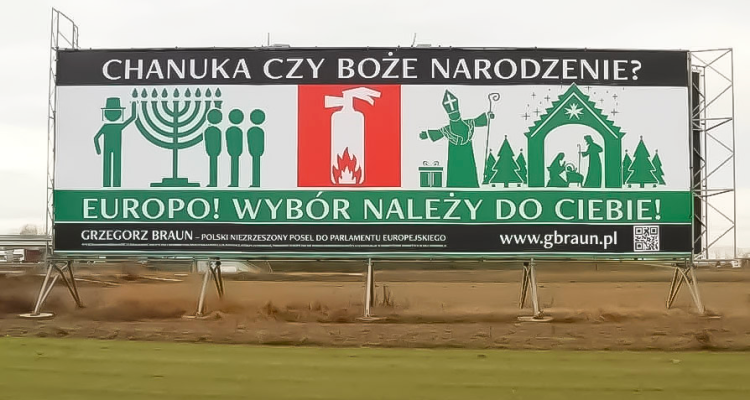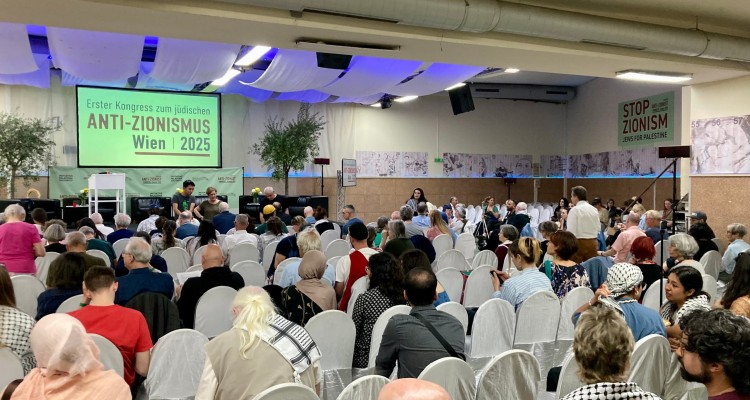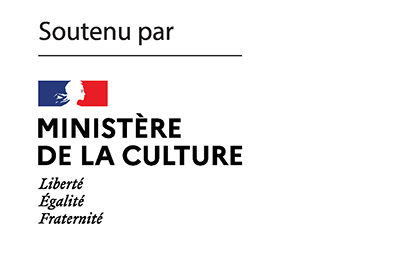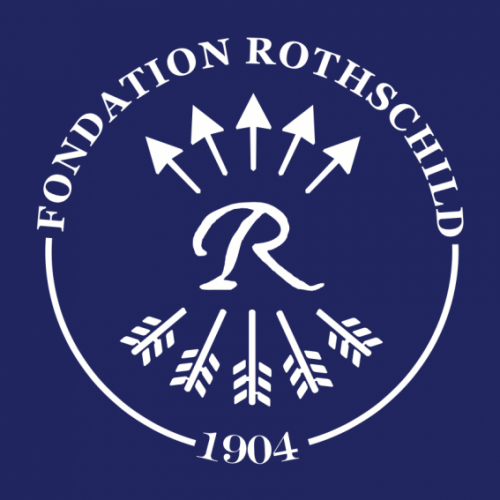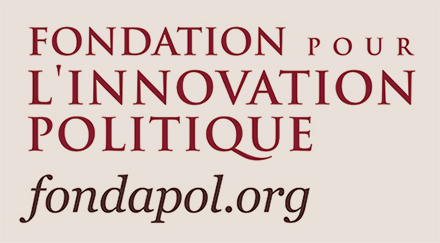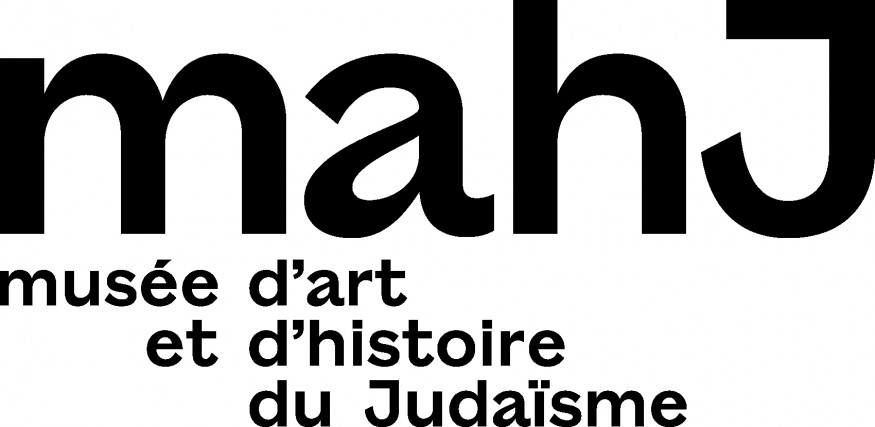What kind of coexistence Viktor Orbán considers to be functional for Hungarian Jews and what is the reception of his politic on the Jewish side? János Gadó answers this question for K., providing an overview in which he discusses both the difficult issue of the memory of the Holocaust in Hungary, Orbán’s relationship with Israel, and the divisions that exist within Hungarian Jewry.

We are living through a new sequence of counter revolution in Hungary. The Iron Curtain, which fell at the end of the eighties along with Soviet rule of the Central-Eastern European satellite nations, is now being rebuilt in a metaphoric sense. Europe is once again sorting into two camps, the first the West, which has plodded down the path to democratization since the end of World War II; and on the other side, Central-Eastern Europe, where the last decade has seen an alarming democratic recession in many countries. I will argue that the refusal of self-examination and self-criticism largely contributed to this phenomenon.
Post-Soviet Europe Evades Confronting Past Crimes
The political mainstream in Western Europe is moving more and more resolutely forward on the path of critical self-examination. On this path they seek to disclose and eliminate any oppressive structure in their society. Radicals go as far as to regard all traditional institutions – such as religion, nation, family, gender roles – as oppressive structures.
Most nations of the former Soviet bloc have been frightened by these developments and embark on the opposite path toward a mythological past of arch-conservative, nationalistic Christian ideas. Meanwhile their anger grows toward the institutions of democracy and tolerance which, they believe, have become the gravediggers of their brave old world.
It is remarkable that although the chasm is widening between these progressive and backward political currents, they both firmly insist on rejecting Jew-hatred and claim to be true protectors of the Jews. Meanwhile, however, radicals of both sides figure the Jews as enemies: the far left expresses its hatred using the 21st century anti-Zionist language of minority rights and anti-racism, while the far-right blames the Jews using 20th century terms of conspiracy theories.
Islamists in Western Europe speak both languages, but they publicly prefer the widely accepted human rights language against the “Zionists”.
Most nations of post-Soviet Europe reject human rights-based policy because they loathe soul-searching and its consequences. In this part of Europe, the grievances of the nations are too deep to forget, and the crimes committed by these same nations are too grave to be confronted with.
To evade confronting our past crimes there is no better way than insisting on our victimhood. The nations of post-Soviet Europe generally regard themselves as victims of both fascism and communism. At the same time, they understand that they must address the worst genocide of history, the Holocaust, which took place mostly in their lands. There is no way to escape the culture of the Holocaust in Europe – to which they now belong. Therefore, they attempt the impossible: they invite the Jews to share the status of victimhood. “We all were the victims of the totalitarian regimes of the 20th century!” they stress. An unusual phenomenon: chauvinistic, nationalistic, antidemocratic regimes wish to have the Jews as partners in interpreting the past.
The best-known example of this aspiration is the legislation of the Polish Parliament which orders to sanction anyone accusing the “Polish nation” with crimes committed against the Jews during WWII.
Government-Sponsored Holocaust Memorials in Hungary
The Orbán government’s handling of the Holocaust remembrance is also a very good illustration of this process.
Prime Minister Viktor Orbán’s second stint in power began in 2010, and he has hardened his grip on the government ever since. In April 2014, a didactic statue was erected on Budapest’s downtown Szabadság tér (Liberty Square), a site in which innumerable statues and memorials compete for pride of place. The cenotaph’s name is the “Memorial for the Victims of German Occupation”. In the center of this composition, an angel, representing Hungary, is falling to the ground while the Nazi eagle is about to strike at him. An inscription, “To the memory of the victims,” can be read in several languages, Hebrew included. The statue’s pretty direct message is that Hungarians – Jews included – were the victims of Nazi Germany.
This message was utterly rejected by both Mazsihisz (Federation of Jewish Communities in Hungary) and the political opposition. Protesters occupied the site and organized an incessant series of events in order to prevent the erection of the statue. Mazsihisz, the premier representative body of Hungarian Jews, took the bold decision to cut off the cooperation with the government in the events of Holocaust Memorial Year, a series of commemorative events highly publicized by the government.
In the end, the statue was inaugurated, but protesters immediately plastered it with items of their own: photos, documents of their relatives deported to Auschwitz by the Hungarian state; explanations describing the flaws of the statue in several languages. “Living memorial” is the name of this countercultural composition.
András Heisler, president of Mazsihisz, was a regular participant in these protest actions. His defiance has not been forgotten by the government: he managed to impede the success of the Holocaust Memorial Year, an event of high priority on the regime’s political agenda.
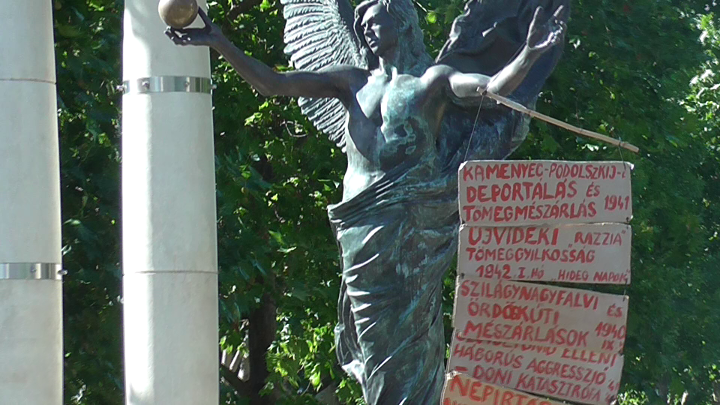
The Holocaust Documentation and Memorial Center (HDMC) had fallen victim to this same government policy. Faraway from Budapest’s downtown, located in the basement of a medium-sized synagogue, this exhibition was intended to be the Hungarian version of Yad Vashem or the United States Holocaust Memorial Museum. Opened in 2006, this relatively small exhibition offered a fair representation of the antecedents and of the history of the Shoah in Hungary. It addressed frankly the responsibility of the prewar Horthy regime, the Hungarian elite and ordinary Hungarians as well.
Not surprisingly, the Orbán government, which came to power in 2010, could not accept this site as the primary institution of Holocaust remembrance. They intended to remake the museum in their own vision, but after the uproar, they preferred to suffocate it silently. By cutting its budget, by reassigning personnel they managed to push it to the periphery. The number of HDMC’s visitors fell below 25.000 in 2016, whereas in the same period more than 400.000 people visited The House of Terror yearly. This latter institution, in the heart of Budapest offers a large-scale exhibition about the communist oppression of the Hungarian nation. (Some 20 percent of the exhibition is dedicated to the notorious arrow cross (Hungarian Nazi) movement. This is to demonstrate, that nazism and communism are equally alien ideas forced upon the Hungarians by equally alien powers.)
To substitute for the degraded Holocaust Memorial Center, Mária Schmidt, the government’s semi-official historian (director of The House of Terror), had come forward with a wide-ranging proposal. A brand new institution, by the name of The House of Fates, was to recount the story of the Shoah in Hungary – according to the government’s vision, of course. The new plan had been announced in 2013. The construction started in 2015 in a remote train station building, and advanced at great speed. The Jewish community and the Jewish public were cautious, and wished to see the set-up of the great exhibition. In 2016, Mária Schmidt presented a mixture of documents, 300 pages altogether. As this was unsuitable for judging the exhibition, Mazsihisz declined to take any responsibility for the project. After some years of deadlock, in 2018 the third Orbán government chose to cooperate with Mazsihisz’s rival, the Unified Community of Israelites in Hungary (EMIH by its Hungarian Acronym), a local branch of the Chabad Lubavits movement. The leading rabbi of EMIH, Slomó Köves, took full responsibility for the project and promised an opening by 2019. However, after publishing some details of the exhibition, these were sharply criticized as well. Since that time Köves prefers to work in silence on the project. He last promised an opening by 2022.
Having seen the deadlock over the issue of the Hungarian responsibility for the Shoah, Mazsihisz leadership came forward with a new proposal some years before: as we cannot agree over the issue of the tragedy of the 20th century, let us put the emphasis on the golden age of the 19th century. The “House of Coexistence” should present the bright side of Hungarian Jewish history. The government agreed and a new exhibition had been arranged in the fully renovated building of the downtown Rumbach street synagogue. Financed by the government, written and designed under Mazsihisz’s auspices, the exhibition tells the story of the Politzer family, whose descendants were orthodox rabbis, Hungarian writers, American magnates and many more. The exhibition, Mazsihisz leaders insist, is ready, the opening ceremony will take place at the end of the pandemic.
What kind of Holocaust discourse would be acceptable for this government – we may ask? Gergely Gulyás’ speech on the last International Holocaust Remembrance Day may advise us in this regard. In his speech, Gulyás, Orbán’s “chief of staff,” acknowledged that the “Hungarian Jews were not protected by their homeland” and honestly emphasized the responsibility of the Hungarian state, which “by thought, word, deed and omission, also contributed to the horrors committed”.
This may be an acceptable compromise for them, as the “state” means some tens of thousands of bureaucrats, policemen, gendarmes, and soldiers. Thus the “Hungarian people”, the “Hungarian nation” are basically relieved of responsibility.
On the same occasion, Viktor Orbán addressed the issue more briefly: he sent a short message to Ronald S. Lauder, the President of the Jewish World Congress, stating that “the Hungarians had learned the lessons of the Holocaust”.
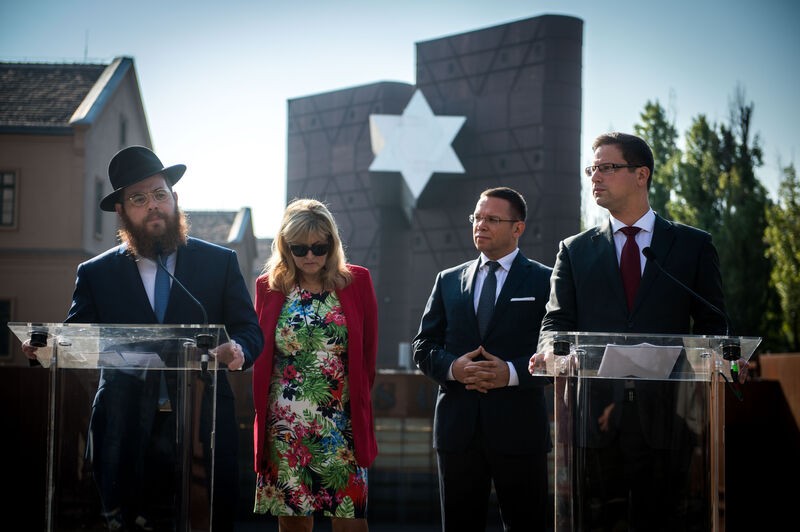
Focus on Israel
Because the memory of the Holocaust has thus proved incompatible with the 19th century inspired, romantic-tragic self-image of the Central Eastern European nations, a different field of common understanding with the Jews was required. This was the field of mutual political interests and fruitful cooperation with Israel. That is how the nations of Western Europe started anew in the 1950s: instead of talking about the all too painful tragedies of the war, Western governments preferred to establish friendly ties with the young and sympathetic State of Israel. “The past may divide us, but the present binds us together and the future is definitely promising” – they opined.
Prime Minister Orbán (as well as Kaczynski and the likes) with his paranoiac religious and nationalistic policy get along well with Israel, which sought peace based on universal humanistic ideas in vain. After offering peace to the Palestinians, Israel got the Al Aqsa intifada in exchange, this apogee of Jew-hatred. Most Israelis, understandably, turned away from these beautiful but dysfunctional ideas toward the right, which emphasized the importance and durability of religion, tradition, nation and self-defense. That’s how Israel had found a common ground with the nations of Central and Eastern Europe.
A basic difference should be emphasized, however. Unlike the paranoid Orbán, who has no real enemies in his region, Israeli leaders must face real existential threats. And unlike many nationalists of Central and Eastern Europe, Israelis never committed crimes against humanity. (Although no other nation on earth has been so often accused falsely of genocide as the nation of Israel.)
Mutual interests persist nevertheless: Orbán needs the “kosher stamp” for his policy, while Netanyahu needs political allies in the rather unfriendly EU.
Strong nationalism and suspicion toward the EU is a robust bond between the two. However, the history and political traditions of the two nations are extremely different.
Relying on religious traditions as retrograde regimes in Central and Eastern Europe do can also be a bond between Hungarians and Jews: Orbán’s regime strongly encourages Jewish religious revivals and delivers financial assistance to Jewish religious institutions.

Anti-Semitism Discouraged; Anti-Semitism Encouraged
In line with the aspects mentioned above, the Orbán government does not encourage anti-Zionism. On the contrary: the government-controlled media in Hungary is more pro-Israel than the Western mainstream. It does not encourage traditional anti-Judaism either.
Progressive Western European politicians, media outlets, NGO-s are highly receptive to “Israel criticism” and – to a certain extent – are likely to support anti-religious policies, like banning kosher slaughtering and circumcision. At the same time, they firmly reject 19 and20th century anti-Semitism, like Jewish conspiracy theories. And they embrace assimilated, progressive, Israeli-critical Jews.
The Hungarian policy toward the Jews is the mirror image of the above: they open the gates to religious and nationalist Jews while they curse Western progressive, universalistic, minority oriented politics. The symbol of the latter is George Soros, the public enemy number one – “but not because he is Jewish”.
George Soros, the ideal scapegoat, had been invented by two American conservative spin doctors: Arthur J. Finkelstein and George Birnbaum. The spin doctors have since exited the Hungarian political scene, but Soros has remained and turned from scapegoat into a ubiquitous monster. Wherever anti-Hungarian forces are detected, Soros must be the driving force behind them.
Orbán’s government stressed many times that “they have no problem with Soros’ ethnic background” and referred to a survey which claims that respondents don’t associate Soros’ name with anything Jewish.
Nonetheless: choosing a Jewish cosmopolitan billionaire as Hungary’s major enemy is a highly irresponsible political move – to put it mildly.
At the height of the anti-Soros campaign Mazsihisz president Heisler addressed an open letter to Prime MinIster Orbán requesting he stop. Orbán answered: he politely but firmly rejected the request[1].

Jews Who Don’t Like Orbán’s Policy
In light of this information, we might say that a tacit pact has been proposed by Hungary’s government to the country’s Jewish community, pertaining to memorial politics and historical narrative. The main provisions are such: find a mutually acceptable interpretation of the Holocaust in Hungary; find the common elements of Hungarian and Israeli nationalism for the sake of mutual political benefit; Increase the religious character of the Hungarian Jews and decrease the political character of the Jewish issue in order to minimize the significance of those universalistic “subversive” Soros-like elements among the Jews.
Orbán is not obsessed with the Jews: he tries to handle the problems he has inherited. And he is cynical enough trying to use the issue to his own benefit. (The government media regularly reports about the anti-Jewish atrocities committed in Western Europe.)
Most Hungarian Jews regard Orbán’s policy with deep bitterness, abhorring the retrograde paranoiac nationalism and the lack of any self-reflection. They deem German repentance as the path Hungarians should follow. According to a survey[2], Hungarian Jews have the highest level of trust in EU institutions among European Jewish respondents. The EU is regarded mostly as a refuge from the dangerous 20th century like nationalism. Hungarian Jews, struggling with retrograde politics, are not always sensitive to the degeneration of the far left or Islamist anti-Zionism in Western Europe. Reading about it in the government press, they may view it as Orbán’s propaganda.
Hungarian Jews belong to the most assimilated communities in Europe. Some 138.000 people of Jewish ancestry may be living in Hungary according to demographic estimates. These same data tell, however, that only 10 percent of these people are affiliated in any way to the Jewish community. No more than 5,000 attend Jewish events regularly. Sociologist András Kovács, the author of the study, had the number of attendants counted on Rosh Hashana, the holiday when the largest number of believers appears in the synagogues. According to this, about 3,200 people attended the service in the twenty operating synagogues of Budapest in 2016. At an average Kabalat Shabat, 700 people were counted there.
The true religion of most Hungarian Jews is anti-fascism, anti-racism, minority rights, the admiration of Hungarian culture and Hungarian liberal traditions, the disgust with anti-Semitism and – overall – the memory of the Holocaust. These last two factors are the real bond between liberal assimilated Jews and the members of the Jewish religious establishment.
Insisting on these universalistic ideas often means going the way of assimilation – as you need not to be Jewish in order to condemn racism, anti-Semitism and to vote for liberal parties.
Secular Hungarian Jews subscribe mostly to these universalist ideas. They respect but don’t follow Jewish tradition and are often suspicious of Jewish particularism. Consequently, they don’t have a strong representation as Jews. Secular Jewish organizations are marginal. An autonomous umbrella body, like the CRIF in France or the Board of Deputies in Britain, does not exist in Hungary.
The foremost representative body of the Hungarian Jews is Mazsihisz, a religious federation whose forerunner had been established in 1867. This body which was the representative of Hungarian Jews during the anti-Semitic legislation (1938-1944) and communist oppression (1949-1989) had been heavily battered by the storms of history. It is divided by infighting and has a hard time resisting outside pressure.
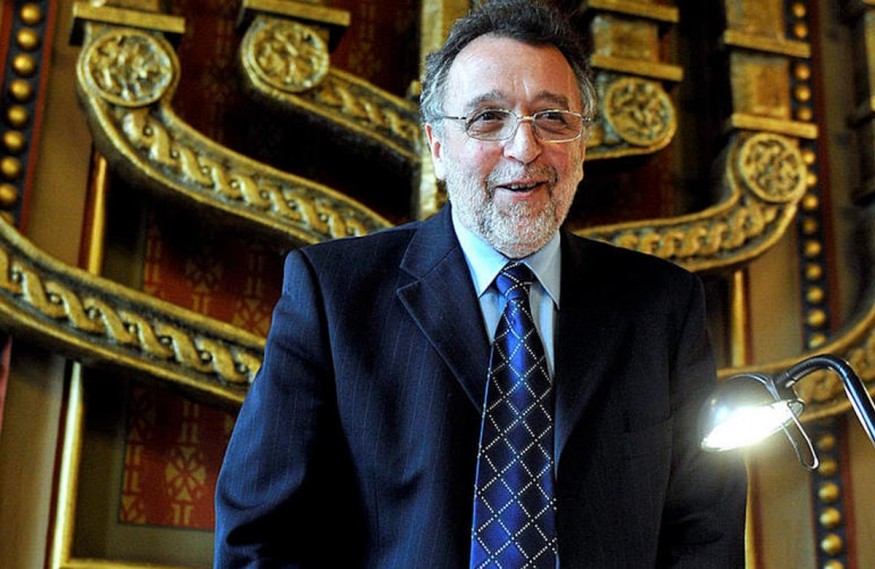
Jews Who Are Satisfied with Orbán’s Policy
As we have seen, the bulk of Hungarian Jews, and their representative body are not receptive to Orbán’s offer, that is to say, the search for cooperative, conservative, religious, nationalist Jews as partners to conservative, religious, nationalist Hungarians.
There had been a shortage of conservative, religious, nationalist Jews – and this vacuum had been filled by the Hungarian branch of the Chabad Lubavits movement.
Chabad Lubavits has a coherent worldview; it can integrate the Holocaust in its theology (it heralds the coming of the Messiah “in the life of this generation”); it has a strong sense of commitment; it is well-versed in both Jewish tradition and modern management. Against this background, they have managed to build up a large infrastructure which rivals that of Mazsihisz.
The first envoy (shliach) of Chabad Lubavits, Rabbi Baruch Oberländer, arrived in Budapest right after the fall of the Iron Curtain. During the years of his tenure, he had built up a modest infrastructure – yeshiva, kindergarten, elementary school – which was sufficient for that couple of hundred people, who were interested in this “authentic” way of Jewish life[3]. Although he did not attract crowds, he was highly esteemed by many as a committed rabbi well-versed in Jewish tradition. Not every rabbi at that time had these qualities.
The Hungarian Chabad movement’s character changed after Oberländer’s disciple, the young, talented and energetic Rabbi Slomó Köves, entered the scene in 2003. Köves reversed Oberländer’s logic: while the latter tailored the infrastructure to the modest needs, Köves opined that a full-scale infrastructure should be built in order to attract more people.
At the beginning, his activism garnered a lot of sympathy, like in the case of the Óbuda shul. Köves managed to revive this large and moribund synagogue, had it renovated, attracted enough people to launch a new community. The reopening ceremony in 2010 attracted 1,000 people, high dignitaries and ordinary people were equally enthusiastic: Köves turned a ruin into a renovated and functioning synagogue.
Köves reorganized the Hungarian Chabad movement, turned it into a state-recognized denomination and initiated huge investments. He set out to revive other synagogues, established a full educational system from kindergarten to university (a historical research institute included), he invested in different media outlets, took control of the House of Fates, initiated an anti-Semitism monitoring body, announced the establishment of a theater (!). To finance this huge network over the long-term, Köves established an enterprise: a kosher slaughterhouse which could supply kosher meat to large parts of the EU.
Financial backing for this expanding network was secured first by an American Jewish billionaire and later by Hungarian banks. A lucrative cooperation between the Unified Community of Israelites in Hungary (EMIH) and the Hungarian government emerged to the benefit of both.
Köves, a visionary man, promises the government (though not overtly) no less than to help it to deal with all Jewish related problems – like accusations of anti-Semitism and the never-ending story of Holocaust memory. In exchange, Köves gets all necessary assistance to build up his network, necessary to spread his version of Judaism.
This cooperation developed smoothly over the past ten years: EMIH rabbis and EMIH allies spoke up for the Orbán government in various forums and stressed the vulnerability of the Jews in Western Europe while pointing out that Hungary is one of the safest countries for the Jews in Europe; Köves and his Action and Protection Foundation (responsible for monitoring and fighting anti-Semitism) underlined many times, that Orbán’s anti-Soros campaign is not anti-Semitic; after the deadlock over The House of Fates, Köves had undertaken to accomplish the whole enterprise, whose purpose is to tell the story of the Hungarian Holocaust without seriously harming Hungary’s image; using Chabad’s strong international network, Köves succeeded in building bridges between the orthodox Jewish world and the Hungarian government. In this framework Ashkenazi chief rabbis of Israel visited Hungary a couple times – a very useful relationship against accusations of anti-Semitism against Orbán’s government[4]; for these services, EMIH was awarded the highest status and is now on equal footing with Mazsihisz and the great Christian churches (Catholics, Calvinists and Lutherans) which means it is entitled to the greatest benefits from the state.
According to the statistics of András Kovács, mentioned above, 284 people attended the Erev Rosh Hashana service in the two Chabad synagogues in 2016, whereas an average Kabalat Shabat attracted 71 people. (These figures may have grown since, as three smaller synagogues started to operate under Chabad’s auspices.) The same figures regarding the dozen Mazsihisz synagogues (on Erev Yom Kipur): 2962 and 581.
2859 taxpayers offered 1 percent of their tax to EMIH in 2019 – as Hungarian taxpayers are entitled to do so. The same figure for Mazsihisz is 11072.
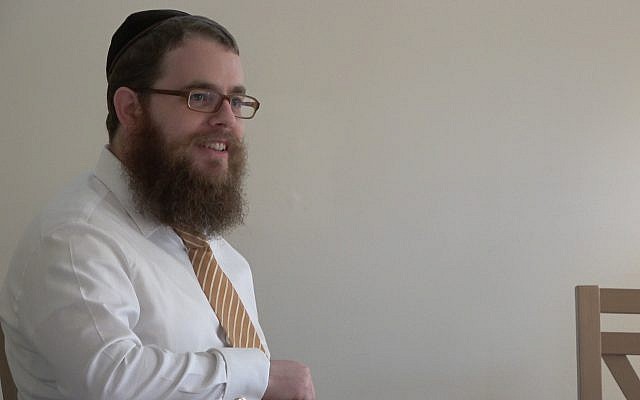
Open Media Warfare Against Mazsihisz
Slomó Köves’ political fervor and aspirations may remind us to some revolutionary movements: the more material power we acquire, the more opportunity we have to educate people (Hungarian Jews in this case) to the right path.
Therefore Chabad/EMIH and the government have a common interest: to clear Mazsihisz’ current leadership out of the way and replace it with loyal persons, who do not oppose the government’s interpretation of the Holocaust and are ready to cooperate with Chabad/EMIH.
A coordinated campaign against Mazsihisz President András Heisler and his loyalists has evolved in the past six months. As a general rule, EMIH run media and the government media strongly favor the opposition in Mazsihisz’ ranks; they amplify the opposition’s accusations and repeat them nationwide in the government media.
As mentioned above, Mazsihisz, with its tumultuous past, has a hard time to adapt to the challenges of the 21st century; it is torn apart by infighting between various factions. President Heisler’s modernizing steps (like accepting the Reform movement in Mazsihisz framework) had been met by bitter resistance by traditional elements, some leading rabbis among them. However, with a tradition of handling internal disputes, Mazsihisz always managed to move on and maintain a kind of unity toward the outside world. Open backing by the government and EMIH media now emboldened some elements among Heisler critics. They launched an anonymous blog and assailed Heisler and his loyalists with a highly-vulgar tone – similar to that of the government media against its adversaries. Statements on this blog are amplified by EMIH and government media time and again.
Criticism of Mazsihisz’ troubles would often be justified if it served the improvement of the organization. Crude and malicious attacks, however, serve as a character assassination against Heisler and his people.
Serving unconditionally the ruling regime is something well known for Hungarian Jews: Mazsihisz’ predecessor, MIOK[5] was governed by a collaborationist civil leadership between 1949 and 1989.
To see a leadership of this kind emerging again would be a serious regression[6].
*
Editor’s note: János Gadó, after this April 2021 article, continued to bring us news of his country’s political situation in an article published in K. on March 30, 2022: “Hungary : The Price of Tranquility?”
János Gadó
János Gadó, sociologist, essayist, editor of “Szombat”, a Hungarian Jewish Magazine on culture, history, society and politics.
Notes
| 1 | My observance is that Soros hardly could be seen in government propaganda messages since the beginning of this year. The 4th of February minister of foreign affaires Péter Szíjjártó made an unusual gesture: he met with some members of the Rothschild family and posted photos about it on his Facebook page. A flood of irate responses – „You have sold the country to the Rothschild!” – was the answer. |
| 2 | Sergio DellaPergola – L. Daniel Staetsky: Jews in Europe at the turn of the Millennium – Population trends and estimates, 2020 October, JPR Demography Unit, P 7. |
| 3 | His monthly periodical – Egység/Unity – was sent to several thousand people, who never subscribed to it. |
| 4 | On the field of international relations Chabad/EMIH is very proactive, EMIH owned media is strongly pro-Israel, whereas Mazsihisz seems to have no real vision or interest beyond Hungary. |
| 5 | MIOK: Magyar Izraeliták Országos Képviselete / National Representation of Hungarian Israelites from 1950 to 1991. |
| 6 | I completed the above text a couple of weeks ago, and since we have been in the midst of an ever-changing situation. Gestures of reconciliation could be observed between Mazsihisz and the government, which was followed by an aggressive assault of Slomó Köves who filed a complaint against Mazsihisz at the Jerusalem rabbinate, requesting the reallocation of Hungarian (!) state subsidies (millions of dollars). As of now, it is impossible to give a distant overview of the political events, we’ll need to return to it as tensions settle down. |
